Samsung Galaxy S 4 Review - Part 1
by Brian Klug on April 24, 2013 12:01 AM ESTDisplay
We wrote about how we suspected that SGS4 would go to a 5-inch 1080p SAMOLED display just after CES. Turns out that was spot on, as the SGS4 includes a 5-inch 1080p Full HD SAMOLED panel, the latest in Samsung's AMOLED roadmap. Samsung's naming stays true, and there's no Plus tacked on at the end, so we get another non-RGB stripe subpixel geometry with SGS4. The last few Samsung AMOLED variants we've seen have had different subpixel grids, and the one on the SGS4 is possibly the most interesting to date. There's still a bias toward more green subpixels than blue or red, this isn't an RGB stripe at all, but instead of the previous RG,BG layout we see this offset pattern with green on one line, then blue and red on another line. Interestingly enough the blue subpixel appears to be a square, and red and green appear to be circles, with the difference in area possibly offsetting the luminous efficiency of each material. Whatever the reason (Samsung has never been official or forthcoming any of these subpixel patterns each time they've changed them) it's present on the SGS4.
At this size however I have to admit that I find the pursuit of the subpixel geometry more of an educational one than something which affects users. While I could occasionally see it on the SGS3, I definitely do not see it on SGS4. The subpixels are now small enough that whatever the pattern, it all looks like a homogenous light-emitting surface, which was the goal after all. I could bring up the visual acuity discussion again but just trust me that it's small enough to not be visible even with actually perfect (not legally perfect, which is different) vision.
So resolution is great and up to par with all the other LCD-bearing flagships this year, lack of RGB stripe notwithstanding. There's that remaining question about brightness, contrast, outdoor visibility, and of course calibration and the saturation issue that has persisted with AMOLED from generation to generation.
On the brightness front, the SGS4 includes dynamic contrast functions that cannot be disabled and change as a function of what is being displayed. There's an "auto adjust screen tone" checkbox under display but don't let that fool you, that doesn't disable dynamic contrast, just white point. Under screen mode are the mDNIe toggles we've seen on countless other previous Samsung Android phones with AMOLED panels, only here we notice something interesting. There have always been four toggles as long as this option has existed, only what's different is now, one of them is named "Professional photo." Reviews of other regional variants of the SGS4 have included the same button but marked "Adobe RGB." Oddly enough it seems that the North American versions at least have this renamed for some reason, but undoubtedly the function is the same. Many speculated that this is now a toggle for some full CMS (Color Management System) which "fixes" the inherent color space issues with AMOLED and oversaturation that occurs when looking at sRGB content on such devices. Unfortunately, I can confirm that my initial suspicions that this is just a continuation of the mDNIe (lite) settings from previous generation is in fact correct. I reverse engineered what I could of these settings from both kernel messages while changing the toggles, and looking at the kernel sources. Turns out that 'Professional photo' mode is actually the 'Natural' mode renamed from previous versions.
So the question was whether the color space or white point actually does change with this mode enabled. I ran the SGS4 through our display tests in each of the modes and think the full color space plot tells the story. The sanest of them all really ends up being the strangely-named 'Movie' mode. Professional photo gives the big gamut with a white point closer to 'Movie,' which is to say around 7000K, but it doesn't fundamentally change the still-present oversaturation or color management issue that exists in Android with these wide gamut displays. Most users admittedly don't care however and just see "bright" colors. Theres' an Auto mode as well which the device ships with that basically has a matrix of mDNIe settings for targeted applications (for example the Gallery, Browser, Video playback) and so forth get settings, which you can see in the kernel.
| CalMAN Display Comparison | ||||||||||||
| Metric | iPhone 5 | iPhone 4S | HTC One X | SGS3 | Samsung Galaxy Note 2 | Google Nexus 4 | HTC Droid DNA | HTC One | SGS4 | |||
| Grayscale 200nits Avg dE2000 | 3.564 | 6.162 | 6.609 | 4.578 | 5.867 | 7.686 | 6.738 | 5.391 | 7.511 | |||
| CCT Avg (K) | 6925 | 7171 | 5944 | 6809 | 7109 | 8506 | 8108 | 8118 | 7020 | |||
| Saturation Sweep Avg dE2000 | 3.591 | 8.787 | 5.066 | 5.460 | 7.986 | 8.517 | 5.856 | 3.365 | 7.823 | |||
| GMB ColorChecker Avg dE2000 | 4.747 | 6.328 | 6.963 | 7.322 | 8.185 | 7.531 | 6.687 | 4.656 | 7.440 | |||
In the "Movie" mode things are better controlled than the Note 2 on the GMB color checker card test, which is the most important one for me. White point is also no longer the crazy 8000K that we saw before, 7000K is commendable for Samsung at this point. Keep in mind that maximum brightness changes in each mode as well as we effectively clamp things, I measured a maximum of 319 nits in Dynamic mode, 311 nits in Movie mode, and 255 nits in Standard, for example.
Running the display at maximum brightness for too long will also get you into an overheating or thermal protection mode as well, which we've seen on countless other AMOLED variants. Most of the time I suspect users will run on Auto brightness however which keeps brightness down to a much lower level to save battery and prevent that from becoming a problem.
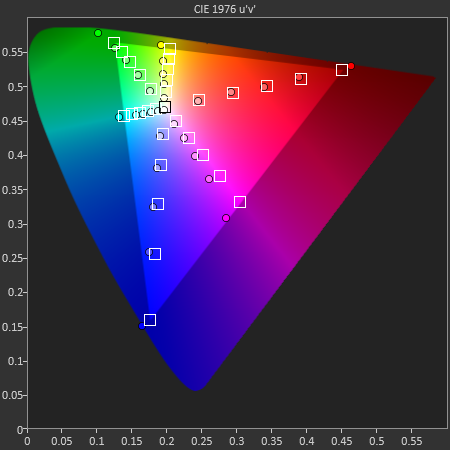
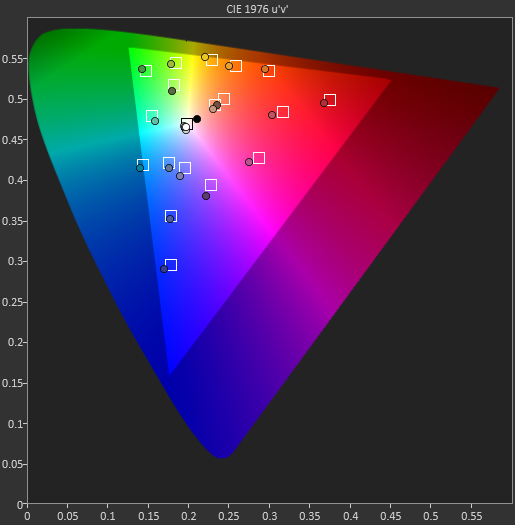
Because "Movie" was the closest to sRGB of all the modes, I selected it for the actual results that I'll present in the table. Admittedly this mode does tighten things up a bit, but it still isn't perfect and I'd still like to see Samsung do something to reign this in at some point.


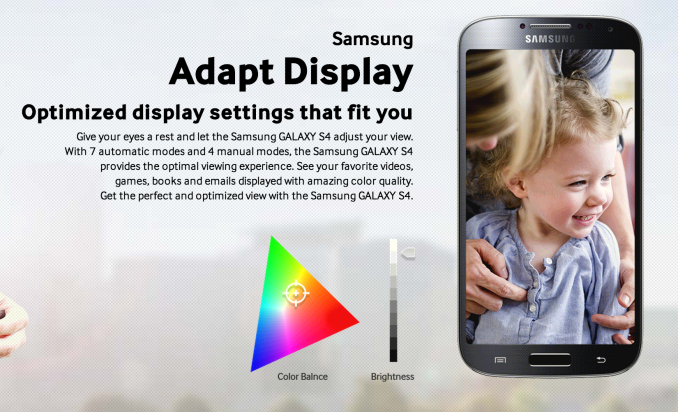




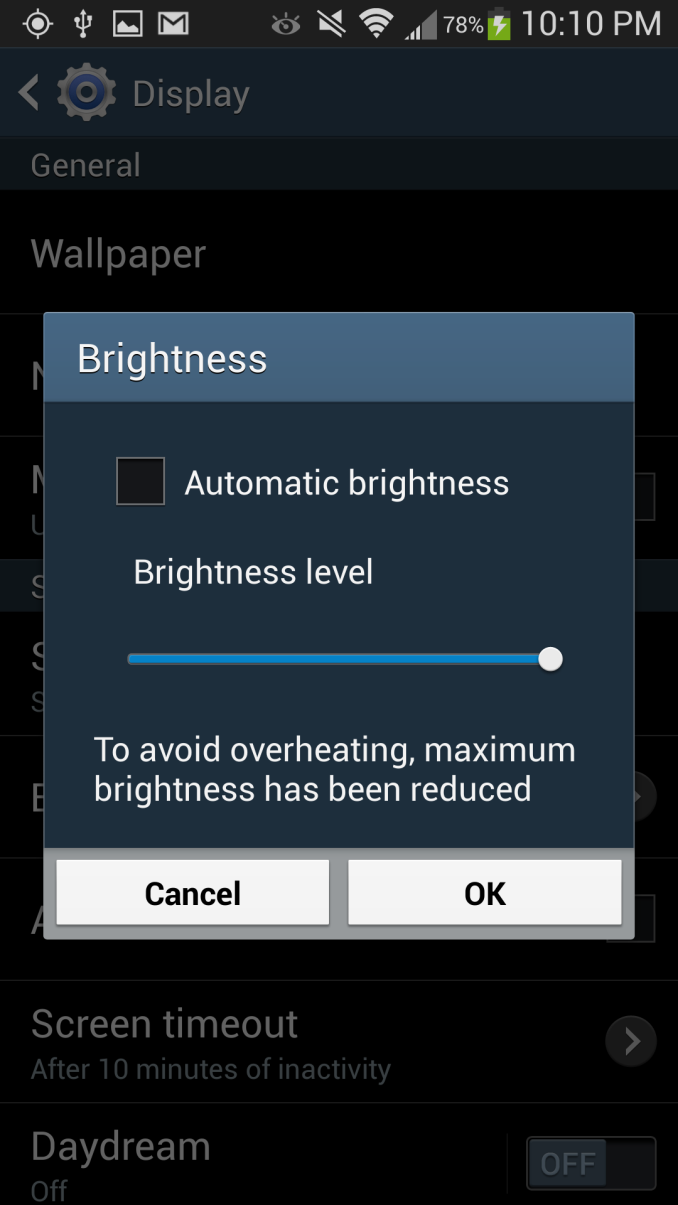
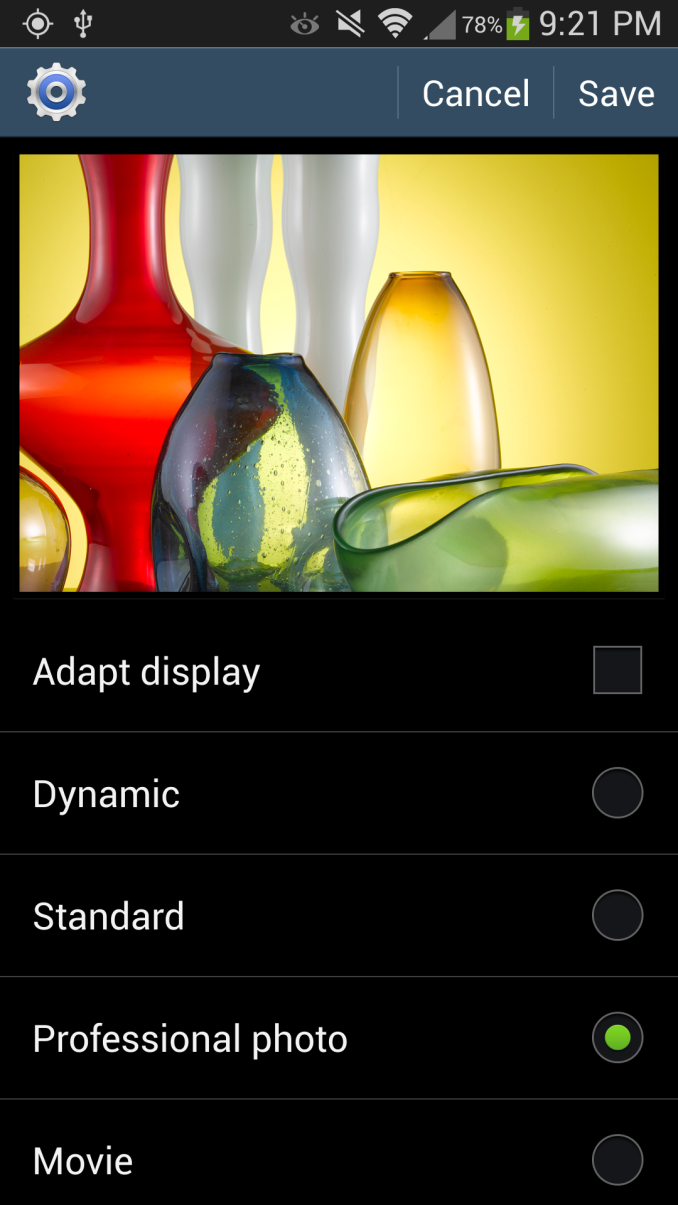
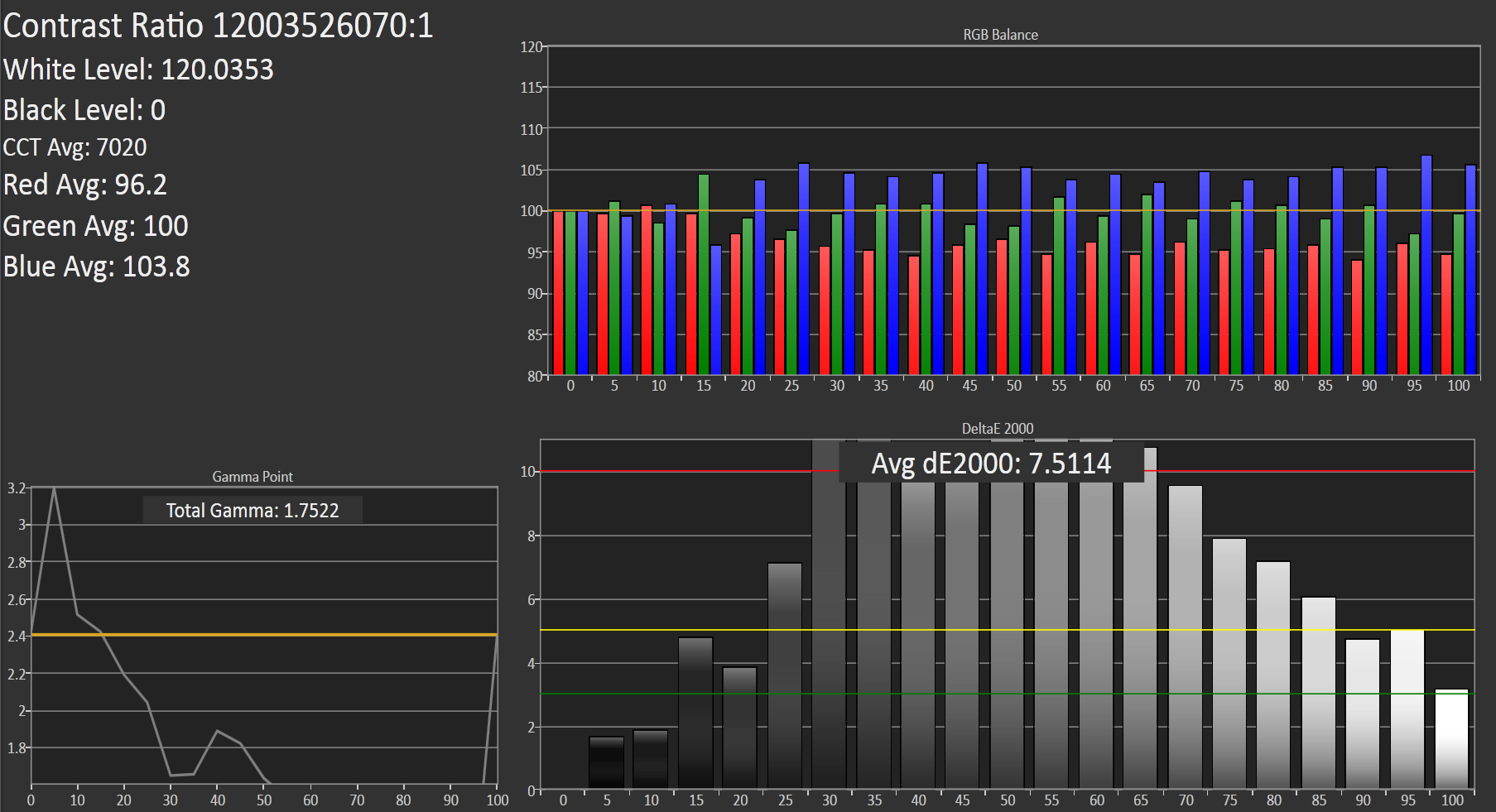








335 Comments
View All Comments
emkei - Tuesday, April 30, 2013 - link
It's funny when article was about cpu/gpu performance and people comment on looks/cover...I guess people cannot read....indtail - Tuesday, April 30, 2013 - link
I'm buying the iPhone the nest time for sure. Enough of no battery and bad cameras for me. I respect Android and have and still will be a loyal fan and even develop some. But my daily phone to be used is definitely the iPhone.In the Android world I'd pick the One simply because of it's premium feel, better camera, and smaller screen. Bigger isn't always better and HTC has realized that. Might as well buy a tablet if you think screen size is so important?
Also, the true spirit of Android is the custom ROMS and once your phone is ROM-ed the only thing that counts is hardware which is better on the ONE. And yes, the S4 is faster but not ver(compared to the S4).
And a good review nonetheless.
indtail - Tuesday, April 30, 2013 - link
This is coming from a year long S3 owner by the way.kgh00007 - Thursday, May 2, 2013 - link
Are you going to stick with this new headache inducing site layout? I just realised that I haven't visited Anand since about 2 weeks after the new site went live and I'm disappointed that you are still sticking with this layout. Why is the text so small?Such a pity, one bad decision has forced me to use the site less and less, there was a time when I checked it a few times a week. Ah well, bye bye Anand, I wonder how many other people you have lost with this terrible new layout? You expect technology to progress, but your site is going backwards in terms of readability and is a lesson in how not to do web design, it hurts to read.
Good luck
Oo凸 - Friday, May 3, 2013 - link
Camera sensor is not IMX135?Latzara - Sunday, May 5, 2013 - link
the plastic is easier to scratch, break and so on - and it's also, and that is absolutely a crime to ignore, much cheaper and easier to replace, as is the case with the battery, the SD card which I for the life of me can't understand some manufacturers not using as it limits the user, but hey the can charge a kings ransom for a few chips that cost way less than the difference in price between let's say an 8GB device and a 16 GB device ... and so on and so onAs someone said earlier it's a matter of choice and tastes and absolutely nothing more -- the real differences are the durability, repairability, customizability as well as what's in my opinion the most important, the inner workings, the CPU, GPU, memory speeds and so on --- you're arguing about a shell which is a simple covering and nothing more...
When i hear about someone judging a device by how it 'feels in my hand' i can't do anything but smirk ...
unbible - Wednesday, May 8, 2013 - link
iphone 5 battery hours seems opposite between 3G/LTE in Web Browsing Battery life test. Shouldn't be 3G 8.19 hrs and LTE 4.55 hrs??Omiaz - Wednesday, May 8, 2013 - link
Im still waiting part 2Quorbach - Saturday, May 11, 2013 - link
Same here. Where the fuck is it ?lilmoe - Thursday, May 9, 2013 - link
Seeing that the Note 2 gets a lower battery score than the iPhone 5, i'm seriously questioning your battery life benchmark Brian...Also, my Galaxy S4 charges from 15% to 100% in 1:40 to 2:00 hours (depends on whether I'm using it while charging, personal experience really). Are you sure you used the official charger?
Guess the best reviewer to any device is myself.........